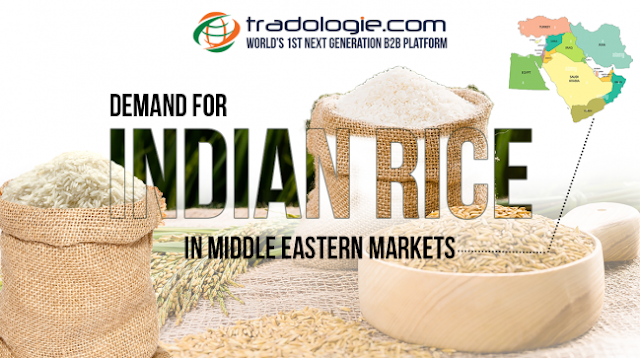Demand for Indian Rice in Middle Eastern Markets
The middle east region is a leading consumer of basmati rice which it imports from India and Pakistan. The region is responsible for as much as 37.8% of the total rice consumption. The major importing countries in the region are Saudi Arabia and the United Arab Emirates, which together accounted for 30 percent of Basmati rice exports from India in 2018.
In the financial year 2020, five middle eastern countries were responsible for 70 percent of the total Basmati rice imported from India. These five countries were Iran, Saudi Arabia, Iraq, the UAE, and Kuwait. India rice exporters are engaging in trade with the region.
Demand fueled by a rapid increase in urban population
Iran is a leading importer of Indian rice and also one of the most populous countries in the region. The significant increase in the urban population in Iran, Saudi Arabia, and the United Arab Emirates with a corresponding increase in disposable income is driving the demand for Indian rice in the region. Indian rice suppliers are making the most of the favorable demand conditions and delivering the best quality rice at competitive costs.
Market drivers for the increase in demand
- Superior taste and quality of Indian basmati rice
- Use of the fragrant rice in several middle eastern cuisines
- Price competitiveness
- The rapid growth of population in the region
- Rise of the urban population in significant markets such as Saudi Arabia and the United Arab Emirates
- The rise in disposable incomes
- Growing awareness about the nutritional value of basmati which is low in fat content as compared to other varieties.
Global trade in rice
Rice is a widely consumed and produced food crop in the globe and is been cultivated in over 100 countries. Approximately, 90 percent of the total rice is grown in Asia, with China and India being the largest rice producers. The green revolution in India significantly enhanced the production of rice, mitigated poverty and hunger, and enhanced the conditions of living for millions of Asians. In the future, the increase in the production of rice is expected to come from an increase in the yields of the crop as the area under rice cultivation is already at its maximum.
The trade-in of rice internationally is relatively less as it is a highly protected commodity; only 9 percent of the total production of rice is traded internationally. However, the volume of trade has increased sixfold between the 1960s and 2018. A small number of rice exporters are trading with a larger number of rice importing nations. India features among the top five rice exporting countries along with Thailand, Vietnam, Pakistan, and China. The top five rice importers are China, the Philippines, Nigeria, European Union and Saudi Arabia; together they account for 26% of the global rice import.
A growing Indian rice exports catering to a global demand
According to the Indian government, the exports of rice from India in 2021-22 are expected to surpass the record 17.72 million tons achieved in 2020-21. In 2020-21, the exports of Basmati and Non-Basmati rice from India increased 87% from 9.49 MT in 2019-20 to 17.72 MT achieved in 2020-21. According to an official statement, the export of non-basmati rice has increased significantly and is expected to more than double in volume as compared to the figures of the financial year 2019.
India is a major supplier of rice to the world market and is responsible for ensuring food security in countries that have been stockpiling in anticipation of supply chain disruptions due to the lockdown scenario of the last two years. Saudi Arabia, Iran, Iraq, Yemen, United Arab Emirates have a significant share in the rice shipments from India.
Want to export Indian rice cost effectively? Connect with Tradologie.com
Tradologie.com is the world’s first B2B global procurement solution for food products and Agri commodities facilitating import and export trade for buyers and sellers from different countries across the world. You can visit the official website, register with the platform, and start exporting basmati and non-basmati rice to genuine global buyers from over 75 countries.
Original Source: https://blog.tradologie.com/demand-for-indian-rice-in-middle-eastern-markets/




Comments
Post a Comment